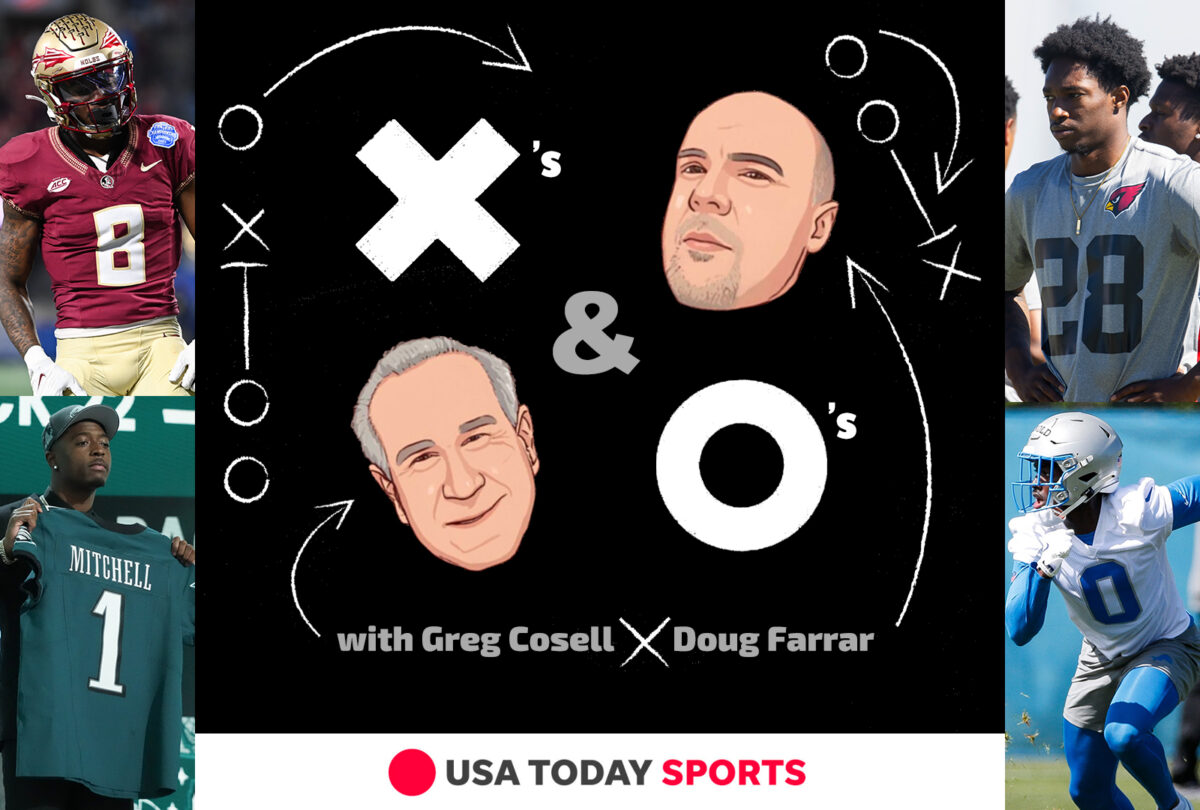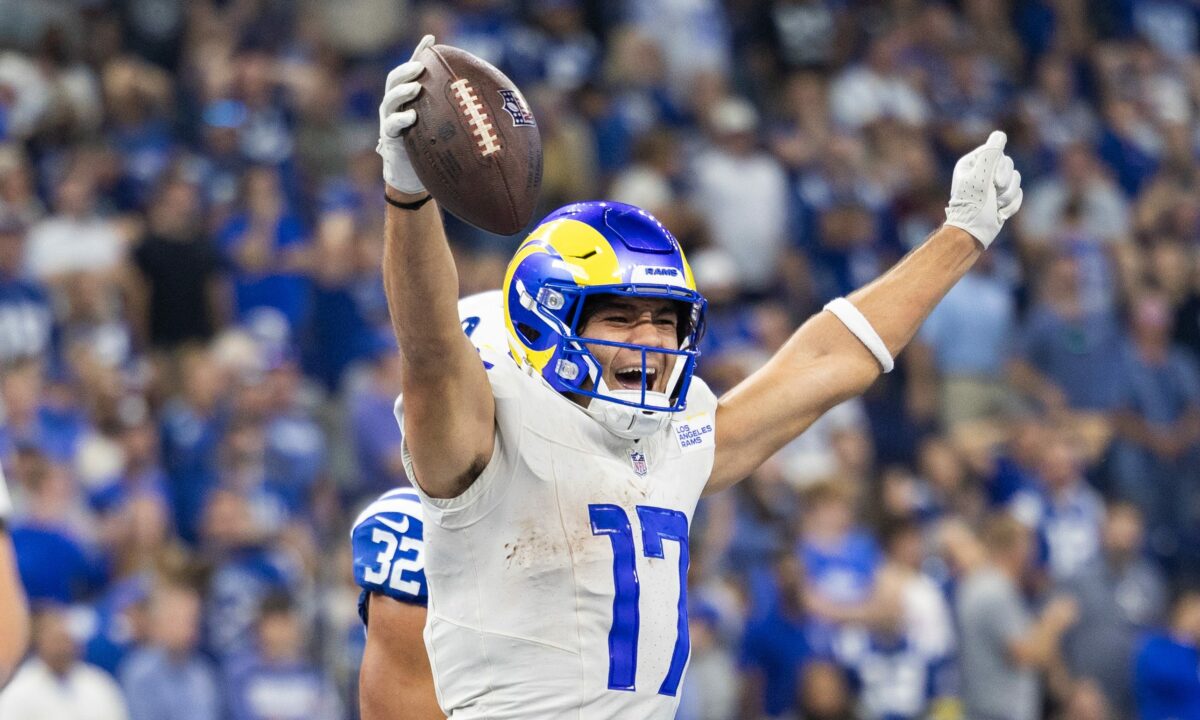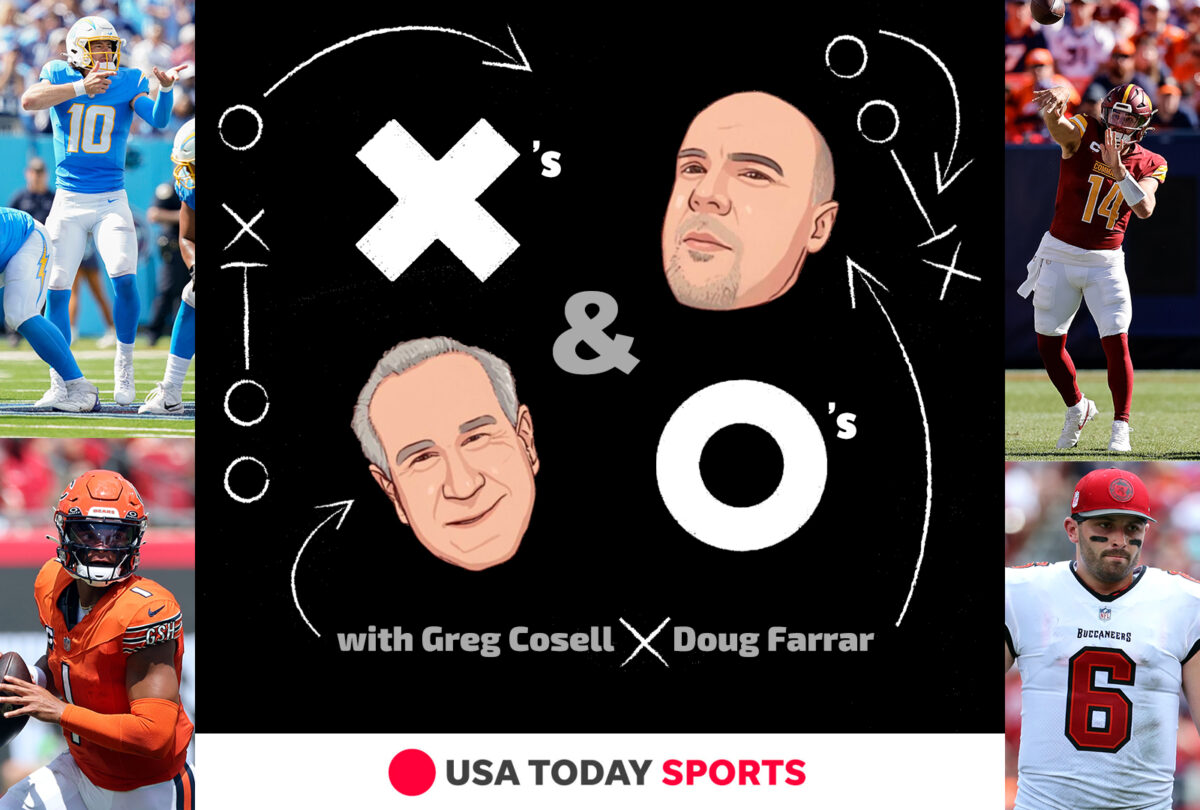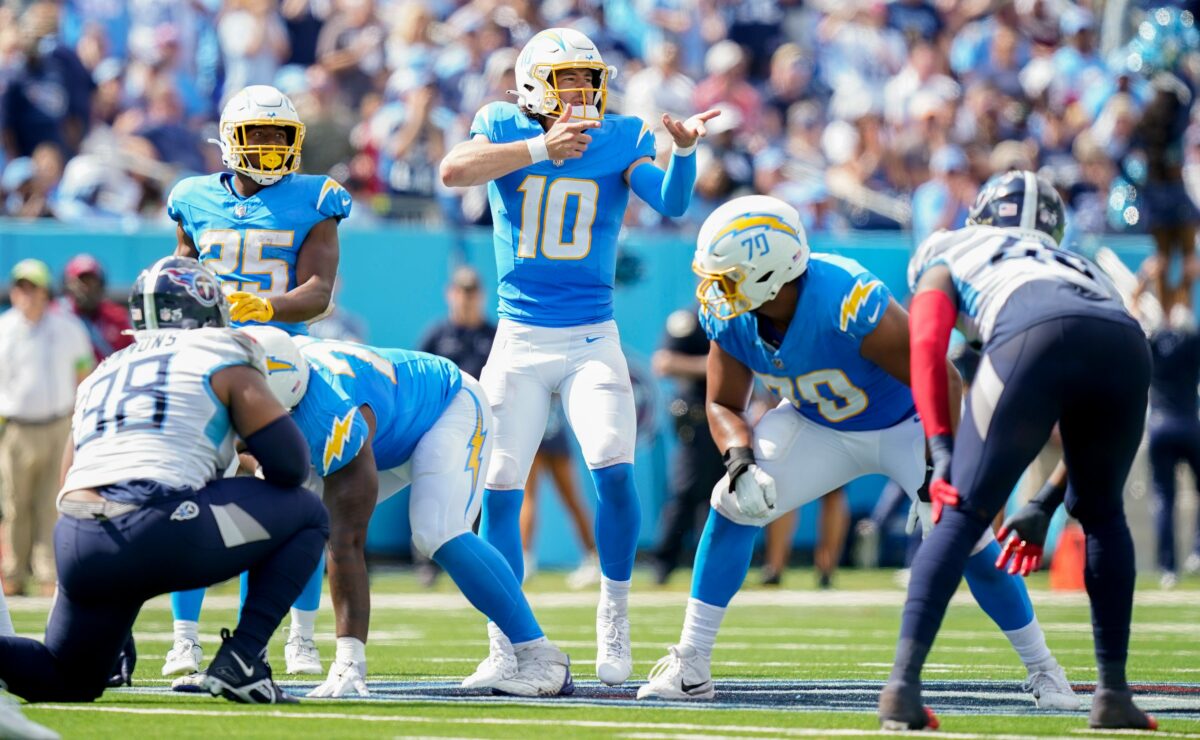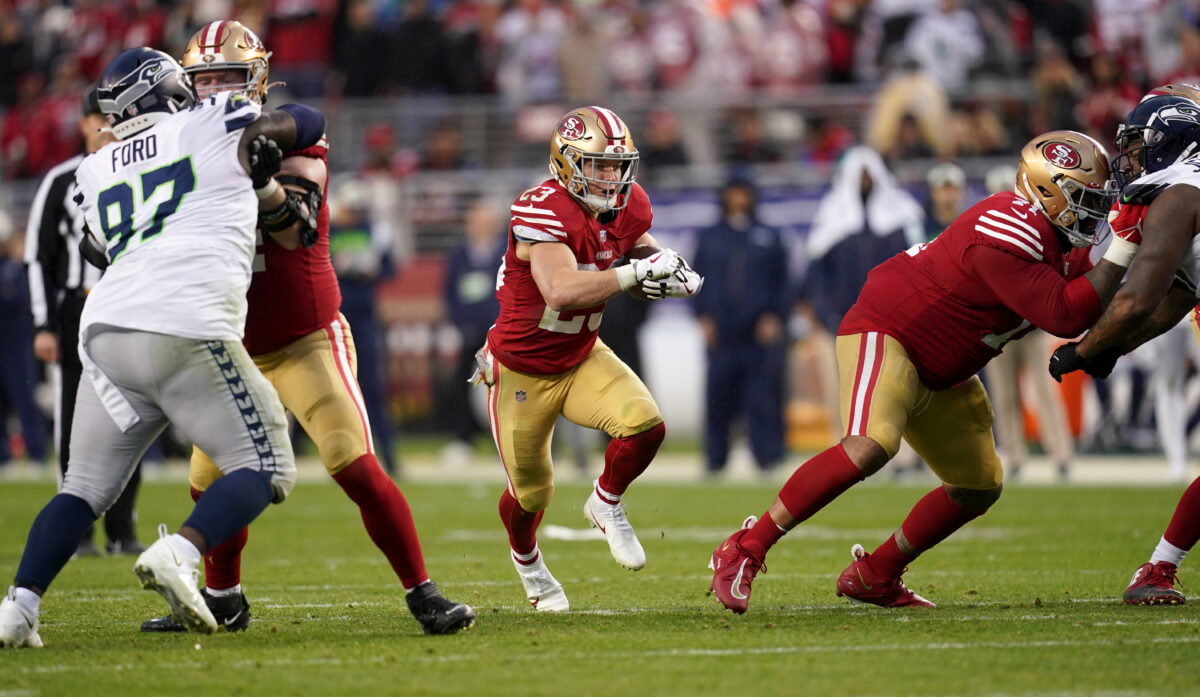In this week’s “Xs and Os with Greg Cosell and Doug Farrar,” the guys pick one play to detail how the 49ers dominate with the motion run game.
With 8:02 left in the wild-card playoff game between the San Francisco 49ers and the Seattle Seahawks, the 49ers already had a 3-0 lead, and they were looking to gain more momentum at the start of their second drive. They started from their own 15-yard line, but they didn’t stay there very long. The first play of the drive was a 68-yard Christian McCaffrey run that took the ball to the Seattle 17-yard line, set up San Francisco’s first touchdown, and helped to facilitate a 41-23 win.
If you’re familiar with the 49ers’ run game and head coach Kyle Shanahan’s offensive tendencies, the most unsurprising part of this particular play was that it had dimensional aspects of pre-snap movement.
[mm-video type=video id=01h29rt9kkgc2qq700nc playlist_id=none player_id=none image=https://images2.minutemediacdn.com/image/upload/video/thumbnail/mmplus/01h29rt9kkgc2qq700nc/01h29rt9kkgc2qq700nc-2a51fff91551958c74b12cc430dd2169.jpg]
In this week’s episode of “The Xs and Os with Greg Cosell and Doug Farrar,” Greg (of NFL Films and ESPN’s NFL Matchup) and Doug (of Touchdown Wire) talked about how pre-snap motion has become one of the NFL’s dominant concepts. We talk mostly about how it works in the passing game, but certain teams and coaches have devised ways to put defenses out of sorts in the run game as well, and nobody does it better than Shanahan — especially after the trade last October that brought McCaffrey to the Bay Area.
Per Sports Info Solutions, from Week 7 (his first with the 49ers) through San Francisco’s NFC Championship loss to the Philadelphia Eagles, McCaffrey had 146 rushing attempts with pre-snap motion, gaining 732 yards, 399 yards after contact, five touchdowns, 5.4 yards per carry, and an EPA of 11.40 — the highest such number for any back with at least 120 carries featuring pre-snap motion.
This play in the Seahawks game had both a pre-snap shift and a pre-snap motion. First, fullback Kyle Juszczyk shifted from right to left, and then, tight end George Kittle motioned from right to left before the ball was snapped. Both movements were designed to set up a perfectly-designed run play.
“What they did was, they started off in a 3×1 set,” Greg recalled. “Juszczyk shifted across and made it a 2×2 set. And then, all they did was to run one of their basic zone runs. But they brought Kittle in motion before the snap of the ball, and he became a lead blocker. It was simply a zone lead run, which is in everybody’s playbook, but they got to it a bit differently, and Kittle became the lead blocker. Often, you’ll see a zone lead run in the I-formation; that’s how a lot of teams run it. You’re in the straight I, and you have a fullback in front of the tailback, and the quarterback is under center, and it’s a zone lead. The 49ers got to it differently.
“Now, it turned out that Kittle didn’t need to make a great block, because he was going to get the cornerback [Tariq Woolen,] and the cornerback was going to stay outside. But it set up beautiful blocking angles, because on that particular play, the Seahawks were in a two-deep shell, and the safety [Ryan Neal] stayed deep, and [receiver[ Brandon Aiyuk didn’t have to make a difficult block.
“This was a great example of the 49ers using motion in the run game, which they do exceptionally well.”
